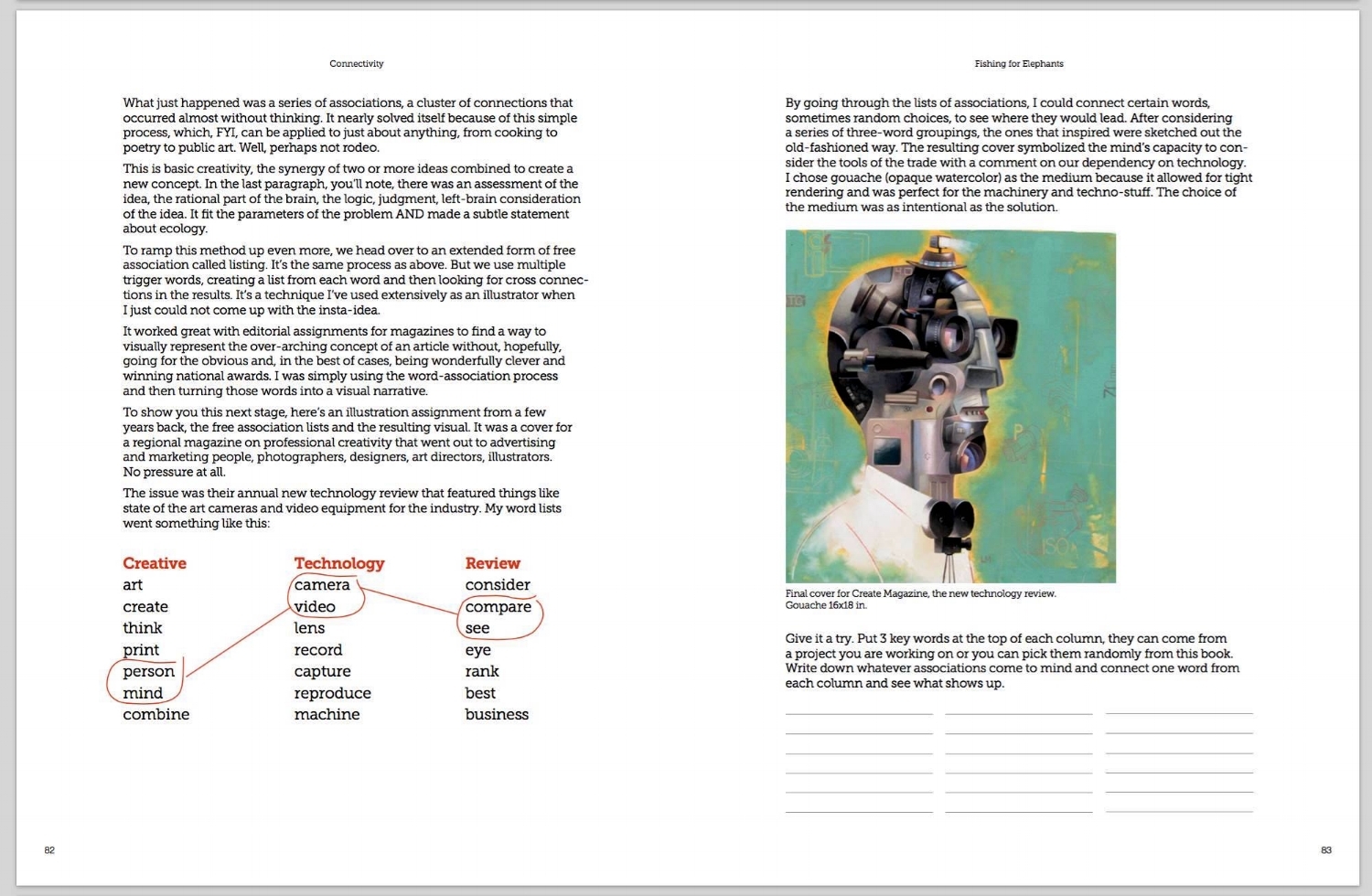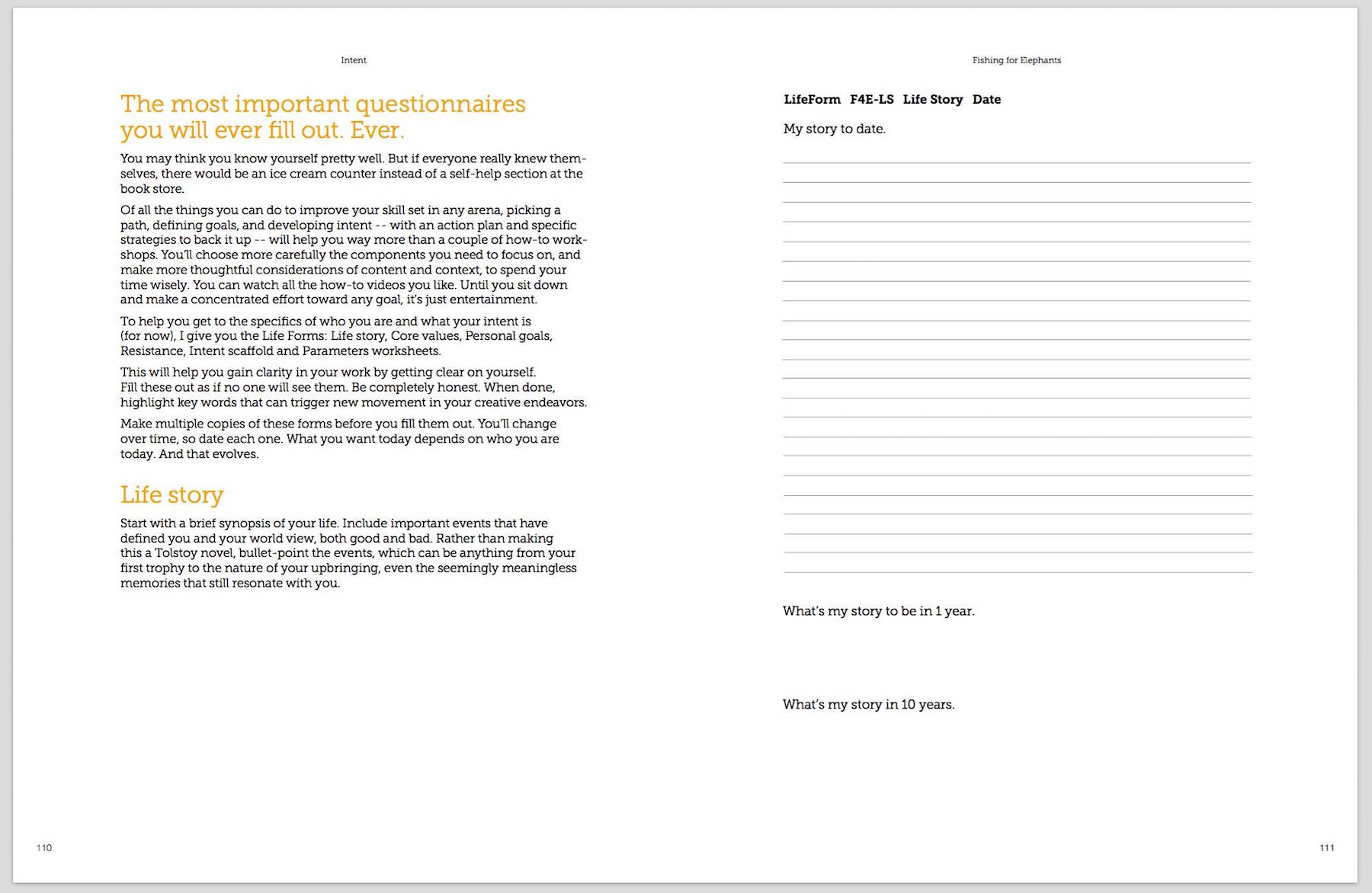Fishing for Elephants
Where do ideas come from? Can anyone be creative? When artists feel stuck creatively, what really is at play? Why was I not taught this stuff in school?
The truth is creativity is not a magical gift that some get and some don’t. It’s a learned skill.
In 2015, I wrote a guest blog for Lori Putnam titled “Bring something to the table”, it was pretty well received. Perhaps because it is something that I believe in, a message at the core of everything I’ve taught since 1990. And at the end of the post there were the comments. One in particular was from a gallery owner who said, “You should write a book”. So I did.
I have thoroughly enjoyed the act of laying out the creative process for the purposes of explaining it to a broad reach of artist and non-artist alike. Doing so meant organizing what I inherently knew. We were never really taught critical thinking or divergent thinking, but, through my years as a visual communicator (graphic designer, art director, illustrator, fine artist) I acquired and refined a way to become an idea machine. And anyone can use it for just about any creative pursuit.
Some of these processes are age-old, time tested and used by many of the great creatives throughout the history of ideation, but, no one has really explained it in a way that is useable. Until now.
In the nearly 30 years of my teaching and workshop instruction I have witnessed the same patterns over and over again in the students. People were afraid to take chances, unsure about exploration, living on assumptions based on what others had told them was the "correct" way to do something. What started as a challenge became a mission for me, a purpose borne out of a lifetime of problem solving and ideating. I want everyone to have these skills. And they can be learned.
While some folks are seemingly more creative/innovative than others, I believe that they simply have less fear. The key components of the creative process can be learned by anyone but overcoming the fear of applying them, that’s the trick.
So the first half of the book is about just that. Not an academic overview or case study compendium but actually how to do it, how to identify what’s holding you back and what to do about it. All based on observation and experience. This stuff, sadly, is not taught in schools. But it should be. The nuts and bolts of this process are actually what made this nation great. Innovation, invention, inspiration, intent, connectivity, problem solving and problem finding.
The book is called, “Fishing for elephants. Insights and exercises to inspire authentic creativity.” And it is now available as a 264 page, 8 1/2x11, gorgeous , informational workbook and as an ebook for Kindle or iBook. If you want a copy right this very instant you can go to Amazon.com.
If you want to read more about it, there's a great overview on the Amazon page with pics of the interior and sample spreads.
It’s really designed for artists but anyone can use the nuts and bolts of it.




